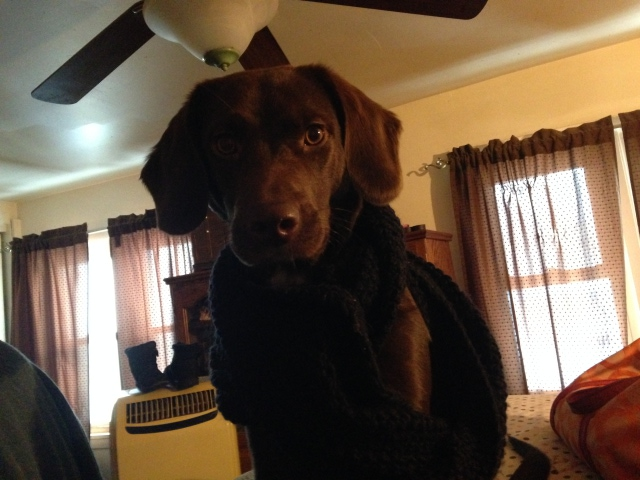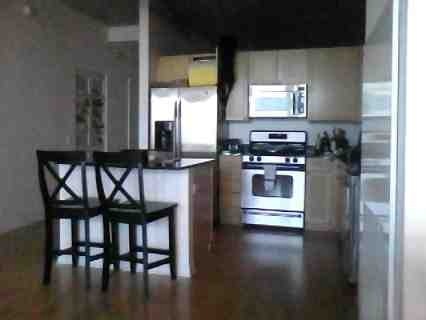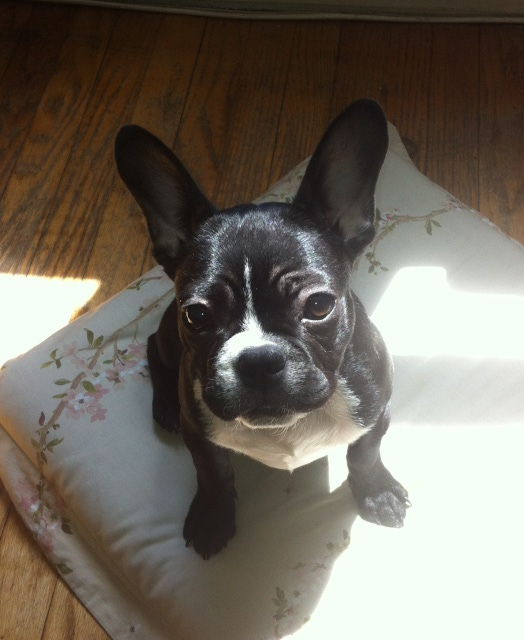QuestionHi, I have 2 dachshunds, one male (neutered) and one female. When they were puppies I crate trained them and then used the crate as a safe spot for them. The crates are usually left in the family room, so they can sleep or relax with the family without feeling secluded. My male was brought into our family in January 2007 and my female came in May 2007. After about December, I started letting them roam free during the day and stopped crating them. The male started becoming crate aggressive and I just let him be. We have moved to a new city last month, and being in an apartment, we have been crating both of them (in 2 crates side by side). The male is extremly aggressive when you go to close the door. Even with a treat, he still shows teeth and attacks the door. He tries to bite as well. My female loves to go in her crate and doesn't show aggression, just my male. Can you give some help as far as cage aggression. We were leaving him out and closed the bedroom door. He started peeing in the house, which is a new one for him. So we started crating since we are gone for hours at a time. When we get home, he is excited to see us and you would never realize anything is wrong. Can you please give us some insight? I would greatly appreciate it!
AnswerHi Brandi. You'll need to do some work to recondition your boy to the crate. He's experiencing stress from the move, a change in his routine from freedom in a house to confinement in the crate which he has already had some negative feelings about.
If possible, start fresh with a different type of crate. If you were using a hard plastic crate, get a wire crate, or vice versa. Or if he won't destroy one, try a soft sided crate. If a new crate isn't a possibility, switch the crates out between dogs. Give him the girl's crate and have her use his. Put it in a different place in the house. Wash it out and put fresh bedding in it. Make everything as different as possible.
Now you can begin to desensitize him to the crate. If you're going spend time at home this weekend, you can start this right away. TAKE THE DOOR COMPLETELY OFF and feed his meals in the back of the crate. If he wants to eat, he has to go in the crate. When he's not looking, drop a really yummy treat in the crate. Allow him to discover them on his own. Make the crate a wonderful place where good things magically appear. Don't put any pressure on him to enter the crate. It's got to be his idea to go in to get the food and/or the treats. And of course, since there's no door, there's no fear of being confined.
Once he's freely entering the crate and getting rewarded for it, put the door back on, but tie it back with a rope or bungee cord so it doesn't swing. Repeat the steps above until he's comfortable entering the crate with the door attached.
For the next step, you'll really have to watch his reactions so that you don't move too fast and create negative feelings again. If you see he's stressing, stop and go back a step.
Untie the door and put his food bowl in at mealtime. While he's eating, say the word "door", close the crate door and toss him a treat in the BACK of the crate. The treat should be something much tastier than his kibble. If you're using a wire crate, drop it in from above in the back of the crate. Once he's eating the treat, open the door again and walk away. The door should only be closed for a second at this point.
What to watch for at this step is him getting anxious that you're nearing the crate while he's eating. If he does, just toss the treat in the back of the crate and keep walking. Always tell the dog what you're doing when you close the door (you're not tricking him!), that's why I want you to use the word "door". It will come to mean that there is going to be a treat coming in the back of the crate. The dog will then automatically head to the rear of the crate to get the treat.
Gradually you will increase the length of time that you keep the door closed before re-opening it. If he aggresses at the door, just stand there and wait until he's calm then open the door. If you follow this protocol and move forward slowly, you shouldn't see this behavior anymore.
This whole process may take a week or so. Don't try and rush it. In the meantime, do you have a small room in the apartment that you can baby gate and confine him while you're gone? Closing the door on an anxious dog is never a good idea. It will only add to the stress level.
For some more ideas on how to work with the crate, watch this video: http://www.youtube.com/watch?v=L8HNO79bZMY It's a demonstration of Susan Garrett's Crate Games which is awesome for teaching dogs to love their crates.
Please let me know if you have questions about anything I've suggested or need clarification. Good luck. I could probably also recommend a trainer for you if you feel you need in-person help.

 Ponter cross aggression
Question
Ollie
I have an 8 y/o pointer cross lurcher (w
Ponter cross aggression
Question
Ollie
I have an 8 y/o pointer cross lurcher (w
 1 year old Choco Lab is very skiddish...
Question
Ginger Coture
Hello there, I have a 1 y
1 year old Choco Lab is very skiddish...
Question
Ginger Coture
Hello there, I have a 1 y
 Dogs Figthing
Question
Stella and Scarlett
I have 2 minature dachshun
Dogs Figthing
Question
Stella and Scarlett
I have 2 minature dachshun
 Dog jumps on counters, Refrigerator,cabinet tops when Im not home
Question
Bell
Hello,
I dont even know where to
Dog jumps on counters, Refrigerator,cabinet tops when Im not home
Question
Bell
Hello,
I dont even know where to
 Trying to housebreak pup & she stops going
Question
Rubie Rooh
Hello - I have a 4 month old
Trying to housebreak pup & she stops going
Question
Rubie Rooh
Hello - I have a 4 month old